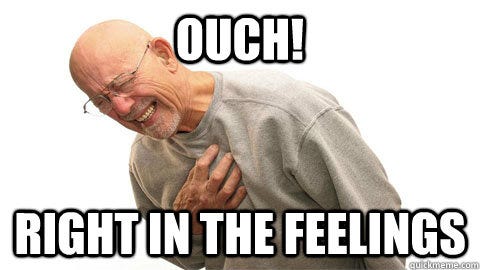Copyright: the Monster Lurking in the Dark
Copyright is a beast for indies, lurking in the dark waiting for us to make just one mistake. Reading this article will make you more prepared when it comes; it tells you about some important aspects of copyright that every indie should know.


The night has risen, and the beast lurks in the dark. A traveller comes to a crossroads. He’s close to his destination – just a few more hours of trekking. He sees a sign telling him which way to go, but the sky is too dark and gloomy; despite the full moon he can barely see the inscriptions on the dark oak sign. He has to reach the city by dawn, and he has no time to waste – people to meet and things to do! Which way should he go?
After a little deliberation, the traveller throws his hands in the air in surrender and guesses to go right. He makes the turn, and sees a clear path ahead – no problem!
Or so he thought.
A few hours later he hears rustling in the dark. Birds start to fly and he spots a moving figure dashing from behind. He starts to panic, but can’t move – he’s paralysed by surprise. Before he knows it, the monster he’s always heard about but never cared to think of was upon him, and it was too late.
That monster, my friends, is copyright – and this is exactly how it preys on unsuspecting developers.
I remember the first time I was attacked by the copyright monster, and boy did it get me good. I was making an Android application called Daily Hero, which was meant to teach its user about Marvel and DC characters. It was a good non-commercial idea intended just to help the comic book community, and after 2 weeks of browsing I managed to create a database of 207 characters and polished it into a respectable app in another 2 weeks. I sent it off to Google to be published on the Play Store, and two days later I got a mail saying Google rejected my app because of all the copyrighted pictures of copyrighted comic book characters in my app.
I’d just been bitten by the monster, and to this day that app has never been published.
The Moral of the Story
This experience was a great way to show the power of copyright in an indie developer’s life. Indie development isn’t easy, and sometimes as a result we, especially the new developers, overlook things in the process.
But copyright is something that should never be overlooked or taken for granted; otherwise it can come back and haunt you hard.
What is it in the first place?
In actual fact, I kinda expect you to already know that copyright is (because like…who doesn’t?), but I’m going to explain it anyway. Copyright refers to the legal rights that an artist has to the work he has created. That means that, through copyright, the artist determines who gets to modify, distribute, and display their work. Technically, every artist has some extent of copyright protection on their work, but the ones that have real potency (and the ones that game developers have to watch out for) are the ones that are officially registered through the government by the artist.
Since copyright dictates that only the author(s) of a creative piece can determine who gets to distribute, display and modify their work, that means that if they catch you doing any of those activities without their permission, they can sue you for literally thousands of dollars; breaking copyright laws (called copyright infringement) is no joke.
Oh yeah, and they can also completely pull down your game until you remove their work form it or comply with the artist’s terms.

Just an expression
It should be kept in mind, however, that copyright laws don’t protect ideas or concepts – they protect only specific expressions of ideas. For example, Clash Royale is an extremely successful online mobile game made by Supercell. It’s so successful, actually, that there are tons of copies of it across Google Play. However, even though those games took the main ideas behind Clash Royale, they didn’t take any real content from it. The other developers make their own characters and sounds and themes – they have the main ideas of Clash Royale in their game (like the mechanics and game feel), but they expressed them differently. As long as the game isn’t really similar to the original, it’s a-okay in copyright’s books.
The expression vs idea aspect of copyright is an issue that confuses many people; there’s no cold-cut line to differentiate between a work that has copied an expression, or an idea. So I’ve put some links in my references to help clear that fog up, if you fancy a little extra reading.
Its relevance to Indies
Well I mean it’s no very hard to see why this is something that’s pretty important to anyone who makes indie games. Indie game developers are often scavenger hunters, and the top things on our scavenging diet are visual and audio assets.
But note: any developer who starts using assets that aren’t theirs basically becomes like the traveller at the crossroads - if they make the wrong choice or overlook a detail, they can end up a victim of the beast of copyright, especially if they got the assets for free.
With that said, allow me to enlighten you with some important things to know about copyright!
Preparing to face the Beast

Things that are copyrighted don’t have to be labelled copyrighted
This is an important thing to note, and something that shocked me when I found it out. It turns out that for work published after April 30th, 1989 (so basically 90% of all assets you’ll find), the artists don’t need to explicitly mention whether their work is copyrighted or not. It can just be copyrighted, and chances are that most of the top assets you find will have some form of copyright on them.
Actually, even if they do mention that the work is copyrighted under some specific license (not every copyright licence is the same), it’s not always made so obvious. I don’t know why, but some mischievous web designers really don’t always make it so obvious.
Take a look at the varying levels of copyright obviousness that some asset sites have:
![]()
For this website, people would have to wander to the About section of the site to find the really important licensing info.
 Freepik.com's info is really obvious.
Freepik.com's info is really obvious.
![]() Even though Icon8's icons are free.their important licensing information is in the "byt" section of their website. How strangle...
Even though Icon8's icons are free.their important licensing information is in the "byt" section of their website. How strangle...

Before you use any asset, be sure that you are allowed use it and be sure that it can be used for commercial purposes. There are tons of cool assets out there, but if they aren’t available for commercial purposes, that means you can only use them if your game has absolutely no monetization associated with it.
Credit isn’t really enough
In actual fact, if you ever modify, reproduce or display someone’s content without permission, but you reference to them, it doesn’t make your case any better in the eyes of the law.
It’s somewhat the same as stealing Joe’s car and putting a sign on it saying “for Joe.” You still stole it – you putting the sign on the car won’t make the police decide to leave you alone or anything.
In the same vein, attribution won’t get you acquitted for copyright infringement. Of course, artists are people too, and if they catch you using their work without permission but with attribution, they might decide to just leave you alone. But not everyone’s that nice, and the chances of this happening will shrink if you are using those assets in a paid game or project.
So it’s best to get permission (if they say you need it, but more on that later), and then add those artists to your game’s credits.
It should also be noted that for some licences, attribution isn’t optional.
If you modify work that’s not yours, it’s still not yours
The fact that you’ve edited some parts of a copyrighted work doesn’t magically make it yours, and it doesn’t save you from any possible trouble you could get into of you use it in a manner that the artist doesn't approve of (like in commercial work when the asset is non-commercial). In some cases, to can actually make matters worse too - you could have infringed not only on the artist’s right to determine who gets to distribute and display the work, but to edit & modify it too.
If you copyright your game and it has 3rd party assets – the game isn’t completely yours
This is also something that you should take note of if you want to slap the shining badge of copyright onto your own your own game one day. Games are essentially just amalgamations (look it up) of lots of different artistic assets stitched up with code. So if any of those assets aren’t yours, and you copyright the game, those assets still aren’t yours. The game itself is yours, and its expression is yours, but the individual parts that make up the expression aren’t necessarily yours by default. That means that the original artists can come around anytime they want and ask you to remove the content from your game, and you just have to. It probably won’t happen, but just keep in mind that the original artists still have the ultimate say in what happens with those assets (unless you buying them gives you your own set of rights or something, which can happen too, I suppose).
The copyright will prevent people from making a total copy of your game, but someone could still use your main character’s sprite (for example) if the sprite isn’t actually yours and the original artist has allowed others to use it.
Is There any Good News?

Well, there is some good news in all this hullabaloo. The truth is, if you really pay attention when you search for assets, you won’t really have to worry about all of this. Now that you know that the monster is lurking, you can have your flashlight ready.
Besides, there are tons of free assets out there, and many of them don’t even require explicit permission from the author to be used. You just look for the licence, check whether it requires credit to the author or not and whether it can be used for commercial purposes.
Just a few licences won’t permit modification actually; they’re not that common.
If you like the license and can abide by it – you’re good to go! And if you’re lucky, you’ll come across a Creative Commons licence. These licences are generally easy to understand and tell you their regulations very explicitly.
It should also be kept in mind that some franchises (albeit few) don’t enforce their copyright laws as strictly as others. Some brands, like Sonic, encourage fans to make fan games, meaning if you use a few of their sprites or songs they wouldn’t particularly mind, unless the game is monetized. But don’t rely 100% on that trust though, they’ve failed people in the past pretty badly.
And besides, as I said, such franchises are probably rare.
Now off with ya!
The time will come, and you’ll face the crossroads yourself. However, unlike your unfortunate predecessor, you’ll have a flashlight in tow. The night will still be dark and gloomy, and the beast will still be lurking, but with your little source of light, hopefully you’ll make the right choice.
References:
Photo Credits: Matthew Smith and For Honor by Ubisoft
Read more about:
BlogsAbout the Author
You May Also Like









